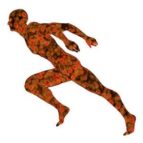What you'll learn
Welcome and Introduction to Causal Effects
Confounding and Directed Acyclic Graphs (DAGs)
Matching and Propensity Scores
Inverse Probability of Treatment Weighting (IPTW)
Instrumental Variables Methods
Description
We have all heard the phrase “correlation does not equal causation.” What, then, does equal causation? This course aims to answer that question and more! Over a period of 5 weeks, you will learn how causal effects are defined, what assumptions about your data and models are necessary, and how to implement and interpret some popular statistical methods. Learners will have the opportunity to apply these methods to example data in R (free statistical software environment).
At the end of the course, learners should be able to:
1. Define causal effects using potential outcomes
2. Describe the difference between association and causation
3. Express assumptions with causal graphs
4. Implement several types of causal inference methods (e.g. matching, instrumental variables, inverse probability of treatment weighting)
5. Identify which causal assumptions are necessary for each type of statistical method so join us and discover for yourself why modern statistical methods for estimating causal effects are indispensable in so many fields of study!
Requirements
Access to a computer or mobile device with an internet connection.
Motivation to learn!
There are no special materials or prerequisite knowledge required for this course.
Who this course is for
Students who are already familiar with this field
Students willing to put in a couple hours to learn about A Crash Course in Causality: Inferring Causal Effects from Observational Data
Advanced students wanting to add another skill to their portfolio
Content Creator
Jason A. Roy, Ph.D. – Professor of Biostatistics – Department of Biostatistics and Epidemiology
This course includes
Participation Confirmation/Certificate
Option for learning at your own pace
Videos and reading material about the course
Practice tests
Assessed tasks with feedback from other course participants
Evaluated tests with feedback
Evaluated programming tasks










































































































